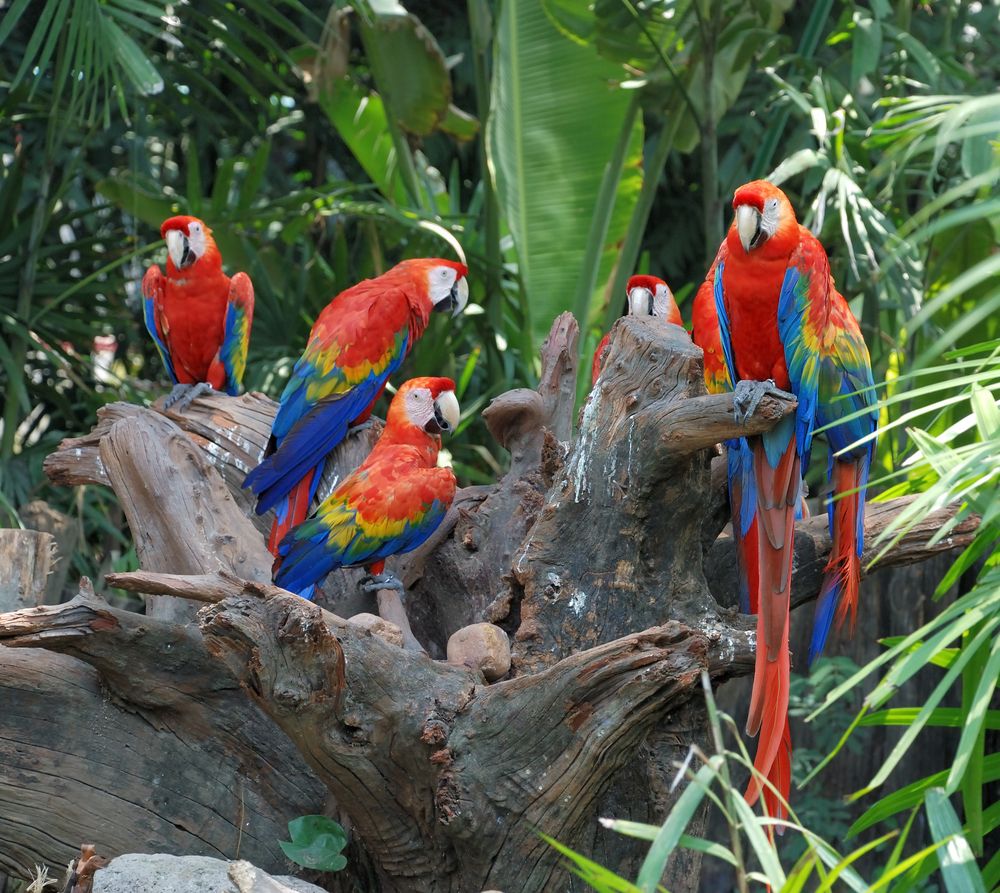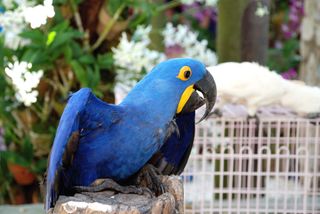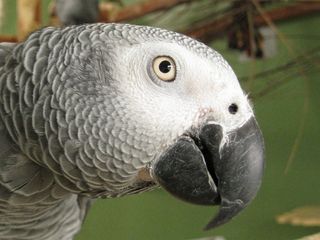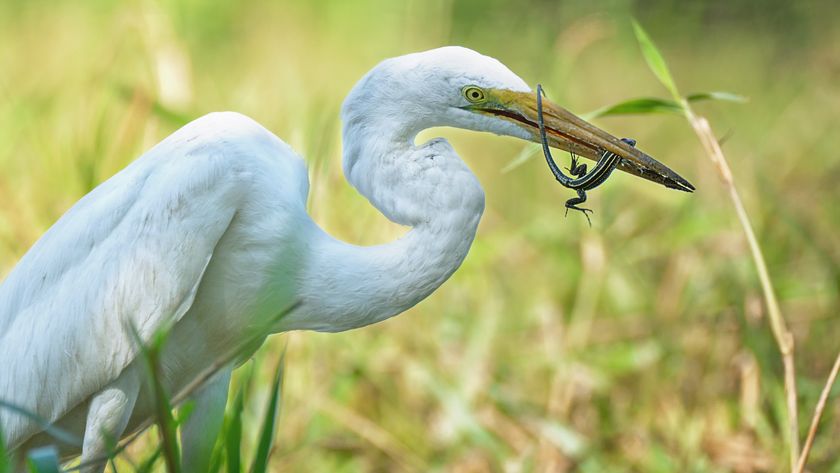Parrot Facts: Habits, Habitat & Species

Parrots are members of the order Psittaciformes, which includes more than 350 bird species, including parakeets, macaws, cockatiels and cockatoos, according to the Integrated Taxonomic Information System (ITIS). Though there are many types of parrots, all parrot species have a few traits in common. For example, to be classified as a parrot, the bird must have a curved beak, and its feet must be zygodactyl, which means there are four toes on each foot with two toes that point forward and two that point backward.
Size
Because the parrot order includes so many different species, parrot sizes vary widely. Parrots can range in size from about 3.5 to 40 inches (8.7 to 100 centimeters) and weigh 2.25 to 56 ounces (64 g to 1.6 kg), on average. The world's heaviest type of parrot is the kakapo, which can weigh up to 9 lbs. (4 kg). The smallest parrot is the buff-faced pygmy parrot, which is only about 3 inches (8 cm) tall and weighs just 0.4 ounces (10 g).
Habitat
Most wild parrots live in the warm areas of the Southern Hemisphere, though they can be found in many other regions of the world, such as northern Mexico. Australia, South America and Central America have the greatest diversity of parrot species.
Not all parrots like warm weather, though. Some parrots like to live in snowy climates. A few cold-weather parrots are maroon-fronted parrots, thick-billed parrots and keas.
With their colorful plumage and ability to mimic human speech, parrots are very popular pets. Some parrot pets have escaped their owners and bred in unusual areas. For example, a popular bird in the pet trade, the monk parakeet, a native of subtropical South America, now resides in the United States after some of them escaped and reproduced in the wild.

Habits
Most parrots are social birds that live in groups called flocks. African grey parrots live in flocks with as many as 20 to 30 birds.
Many species are monogamous and spend their lives with only one mate. The mates work together to raise their young. Parrots throughout the flock communicate with one another by squawking and moving their tail feathers.
Some parrots, like the kakapo, are nocturnal. They sleep during the day and search for food at night.
Diet
Parrots are omnivores, which means that they can eat both meat and vegetation. Most parrots eat a diet that contains nuts, flowers, fruit, buds, seeds and insects. Seeds are their favorite food. They have strong jaws that allow them to snap open nutshells to get to the seed that's inside.
Keas use their longer beaks to dig insects out of the ground for a meal, and kakapos chew on vegetation and drink the juices.
Offspring
Parrots are like most other birds and lay eggs in a nest. Some species, though, lay their eggs in tree holes,ground tunnels, rock cavities and termite mounds. Parrots typically lay two to eight eggs at one time. A parrot's egg needs 18 to 30 days of incubation before it can hatch, so the parents take turns sitting on the eggs.
A parrot chick is born with only a thin layer of thin, wispy feathers called down. Parrot chicks are blind for the first two weeks of their lives. At three weeks, they start to grow their adult feathers. The chick will not be fully matured for one to four years, depending on its species.
Classification/taxonomy
According to the Integrated Taxonomic Information System (ITIS), the taxonomy of parrots is:
- Kingdom: Animalia
- Phylum: Chordata
- Class: Aves
- Order: Psittaciformes
- Family: Psittacidae
- Genera and species: More than 60 genera and more than 350 species. Species that are popular as pets include Ara macao (scarlet macaw), Aratinga holochlora (green parakeet), Myiopsitta monachus (monk parakeet), Poicephalus senegalus (Senegal parrot), Nymphicus hollandicus (cockatiel) and Cacatua alba (white cockatoo).
Conservation status
Many species of parrots are endangered. The kakapo (Strigops habroptila) is a critically endangered parrot, according to the Kakapo Recovery Organization. There are fewer than 150 left. The there are only 50 orange-bellied parrots (Neophema chrysogaster), found in Australia, making it one of the most endangered parrots in the world.
The yellow-headed Amazon (Amazona oratrix) is another endangered parrot, though there are more of them than kakapos or orange-bellied parrots. According to International Union for Conservation of Nature, there are 7,000 yellow-headed Amazons left in the wild.

Other facts
Parrots are very good mimics and can copy sounds that they hear in their environment; they can even copy human words and laughter. The African grey parrot (Psittacus erithacus) is one of the best at this and one named Alex (1965-2007) was reported to be the world's smartest parrot.
The kakapo is one of the world's longest-living birds; they can live more than 90 years.
Cockatoos have a group of feathers on top of their heads that they can move. When on full display, these feathers resemble a mohawk. The cockatoo can also retract the feathers so they lay flat against their heads.
Other resources
Sign up for the Live Science daily newsletter now
Get the world’s most fascinating discoveries delivered straight to your inbox.













